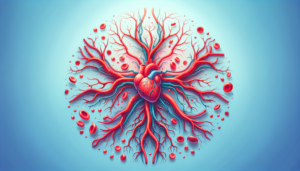The Science Behind Nail Weakness
The Anatomy of Nails
The Structure of Nails
Your nails might seem like simple structures, but they are quite complex. Each nail has several layers which contribute to its strength and appearance. The main components of a nail include:
The Nail Plate
The visible part of the nail is called the nail plate. It’s made of a tough protein called keratin, which is also found in hair and skin. The nails grow from a region under the skin at the nail’s base called the nail matrix.
The Nail Matrix
The nail matrix is where nail growth begins. Cells in this area divide and push older cells forward, gradually forming the nail plate. If the matrix is damaged, it can lead to abnormal nail growth or nail weakness.
The Nail Bed
Underneath the nail plate is the nail bed. This soft tissue contains blood vessels and nerves. A healthy nail bed contributes to overall nail health and appearance.
The Cuticle
The cuticle is the layer of clear skin located along the bottom edge of the nail plate. It protects the nail matrix from infections and maintains nail health.
Common Causes of Nail Weakness
Nutritional Deficiencies
Your diet plays a critical role in the strength and health of your nails. If you’re lacking important nutrients, your nails may become weak and brittle.
<h4Biotin Deficiency
Biotin, also known as vitamin B7, is essential for maintaining healthy nails. A deficiency can lead to thinning and breakage. Foods rich in biotin include eggs, nuts, and whole grains.
Protein Deficiency
Since nails are primarily made of keratin, a protein, a lack of protein in your diet can weaken your nails. Incorporating lean meats, fish, eggs, and legumes into your meals can help build strong nails.
Iron Deficiency
Low iron levels can result in brittle nails. Iron deficiency anemia can lead to spoon-shaped nails, where the nails curve inwards. Consuming iron-rich foods like spinach, red meat, and fortified cereals can improve your nail health.
Medical Conditions
Certain medical conditions can lead to nail weakness as a symptom. Understanding these conditions can help you better manage your nail health.
<h4:Fungal Infections
Nail fungal infections can cause discoloration, thickening, and crumbling of the nails. These infections thrive in moist environments, and symptoms should be treated promptly to prevent further damage.
<h4:Psoriasis
Nail psoriasis often affects the nails in people with psoriasis, leading to pitting, discoloration, and weakness. This autoimmune disease causes skin cells to multiply too quickly, affecting not just the skin but also the nails.
<h4:Eczema
Atopic dermatitis, or eczema, can also cause hangnails and weakened nail structures. This skin condition leads to dry, itchy patches that can affect the area around the nails.
<h3:Aging
As we age, our nails naturally undergo changes. These changes can lead to weaker nails.
<h4:Slower Growth
Nail growth slows down as a proponent of aging, resulting in thinner and weaker nails. This slowdown is a normal part of the aging process influenced by reduced blood circulation and slower metabolism.
<h4:Dehydration
With age, the body loses its ability to retain moisture. This can lead to dryness not only in the skin but in your nails as well, making them more susceptible to breakage.
<h3:Environmental Factors
Your surroundings and lifestyle habits can have a significant impact on your nail strength.
<h4:Frequent Hand Washing
While maintaining hygiene is essential, excessive hand washing can strip the nails of natural oils, leading to brittleness. It’s important to moisturize your hands and nails after washing.
<h4:Use of Harsh Chemicals
Household cleaners, nail polishes, and removers often contain harsh chemicals that can weaken the nails. Opting for acetone-free removers and using protective gloves when cleaning can minimize exposure.
<h4:Exposure to Water
Frequent exposure to water, such as during prolonged dishwashing, can weaken your nails over time. Wet nails tend to be more pliable and can be easily bent and broken.
<h3:Genetics
Genetics can play a role in the strength and growth rate of your nails. If your family has a history of weak nails, you may find yourself struggling with the same issue.
<h4:Inherited Conditions
Certain inherited conditions can affect nail growth and strength. For example, ectodermal dysplasia can lead to nail dystrophy where nails are thin and brittle.
Signs of Weak Nails
Identifying Weak Nails
Knowing how to recognize weak nails can help you take action early. Some signs include:
Brittleness
If your nails are easily breaking or chipping, this is a clear sign of weakness.
<h4:Peeling
When nails start to peel or have multiple layers separating, it indicates that they’re losing their integrity.
<h4:Thinning
Visible thinning of the nail plate can make it susceptible to breaking. This sign often signifies underlying nutritional deficiencies.
<h4:Discoloration
Any changes in color, such as a dull finish or unusual shades, could indicate a health issue or nutrient deficiency.
<h3:Self-Evaluation Tips
You can perform a simple self-evaluation to check the health of your nails:
<h4:Nail Flexibility Test
Gently bend your nails. If they bend easily without breaking, they may be healthy. If they snap or break, they might be weak.
<h4:Moisture Test
Evaluate how your nails respond to moisture. If they feel overly dry and frail after washing your hands or swimming, that may indicate weakness.
<h4:Growth Rate Check
Monitor how quickly your nails grow. Healthy nails typically grow at a rate of about 1/8 inch per month. Slower growth could signal issues.
Managing Nail Weakness
<h3:Nutrition and Supplements
A balanced diet rich in essential nutrients can boost nail health.
<h4:Incorporating Supplements
If dietary changes are difficult to sustain, consider taking supplements specifically designed for nail health. Look for those that include biotin, keratin, vitamin E, and iron.
<h4:Stay Hydrated
Drinking plenty of water helps keep your body and nails hydrated. Aim for at least eight 8-ounce glasses daily.
<h3:Nail Care Routine
A proper nail care routine is key to maintaining healthy nails.
<h4:Regular Trimming
Keep your nails trimmed to reduce the risk of breakage. Regularly file your nails to prevent snagging.
<h4:Moisturizing
Use a good moisturizer on your hands and nails regularly. A hand cream that contains rich emollients can make a significant difference.
<h4:Gentle Cleansing
When cleaning, use mild soaps that do not contain harsh chemicals. Always rinse thoroughly and follow up with moisturizing.
<h3:Protective Measures
Taking protective measures can prevent environmental damage to your nails.
<h4:Use Gloves
When doing household chores, using gloves can protect your nails from harsh chemicals and prolonged exposure to water.
<h4:Limit Manicures
If you frequently visit salons for manicures, consider taking breaks. Some treatments and products can weaken your nails over time.
<h3:When to Seek Professional Help
If you’ve tried home remedies and your nail weakness persists, it may be time to consult a professional.
<h4:Dermatologist Visit
A dermatologist can offer insights and tests to determine the underlying cause of your nail weakness. They can also suggest advanced treatments or medications if necessary.
<h4:Blood Tests
In some cases, blood tests can reveal nutrient deficiencies or underlying health issues contributing to weak nails.
The Psychological Impact of Nail Weakness
Self-Image and Confidence
For many, nails are a critical aspect of personal grooming. Weak, damaged nails can affect self-esteem and overall confidence.
<h4:Social Interactions
People often perceive well-groomed nails as a sign of self-care. Weak nails can lead to self-consciousness in social or professional settings.
<h4:Body Language
Individuals with damaged nails may subconsciously hide their hands during conversations, which can inadvertently communicate insecurity.
Coping Mechanisms
If you find that your nail weakness is impacting your mental well-being, consider some coping strategies:
<h4:Positive Affirmations
Engage in self-affirmation practices that can help you build confidence and reduce negativity associated with your self-image.
<h4:Discussing Concerns
Talking to friends or a therapist about your feelings surrounding nail health can provide you with support and new perspectives.
<h4:Finding Your Style
Embrace styles that make your nails appear healthier, such as subtle nail polishes or nail wraps that give the illusion of strength while protecting your nails.
Natural Remedies for Nail Strengthening
<h3:Essential Oils
Certain essential oils can promote nail health when used regularly.
<h4:Lemon Oil
Lemon oil can help strengthen nails and give them a natural shine. You can mix it with a carrier oil and massage it into your nails.
<h4:Tea Tree Oil
Tea tree oil has antifungal properties that can combat nail infections and promote stronger nail growth. Dilute it with a carrier oil before application.
<h3:Herbal Remedies
Using herbs known for their health benefits can be a natural way to help strengthen weak nails.
<h4:Coconut Oil
Coconut oil is deeply moisturizing and can help prevent brittleness. Massage coconut oil onto your nails and cuticles daily for the best results.
<h4:Garlic
Garlic is renowned for its healing properties. You can rub a clove of garlic on your nails to strengthen them or add it to your diet for overall benefits.
<h3:Diy Nail Masks
You can create nail masks at home using simple ingredients.
<h4:Olive Oil and Vinegar Mask
Mix equal parts of olive oil and vinegar and let your nails soak for about 20 minutes. This mixture provides hydration and nutrients.
<h4:Avocado and Honey
Combining mashed avocado with honey creates a nutrient-rich mask. Apply it to your nails, leave it for about 30 minutes, then rinse off for added strength.
Understanding Misconceptions about Nail Care
Popular Myths
There are many misconceptions surrounding nail care that can hinder proper management of nail health.
<h4:Myth: Nails Should Always Be Cut Short
While maintaining short nails can help reduce breakage, extremely short nails can be more prone to damage. Finding a comfortable nail length is key.
<h4:Myth: Nail Polish Weakens Nails
While some nail polishes can contain harmful chemicals, wearing polish can actually protect nails from environmental damage. It’s all about choosing the right products.
<h4:Myth: All Nail Supplements are the Same
Not all supplements targeting nail health are of equal quality. It’s essential to research and choose products backed by clinical studies and positive user reviews.
Preventing Nail Weakness
Now that you are aware of the common myths, let’s look at practical steps to prevent nail weakness.
<h4:Establish a Routine
Create a nail care routine that includes dietary considerations, regular trimming, moisturizing, and protection to maintain healthy nails.
<h4:Educate Yourself
Stay informed about the best practices for nail health and remedies. Understanding your body and its responses to certain foods and products can be empowering.
<h4:Listen to Your Body
Pay attention to changes in your body that may reflect underlying health issues. Early detection can lead to better outcomes not only for your nails but your overall health.
This detailed examination of the science behind nail weakness sheds light on the various factors that can contribute to weak nails and provides actionable insight for managing nail health. By adopting a proactive approach, you can nurture stronger, healthier nails.








